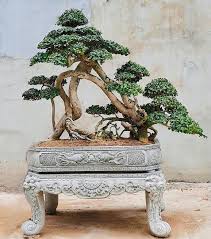The Process of Silk Weaving and Embroidery for Royalty: A Journey Through Craftsmanship and Tradition

The art of silk weaving and embroidery has long been intertwined with the culture, traditions, and power of royal families. Throughout history, the creation of these luxurious textiles for the royal courts has not only served practical purposes but has also been a symbol of status, wealth, and divine favor. Silk fabrics, adorned with intricate embroidery, became the epitome of elegance, used to create the opulent clothing and ceremonial garments of kings, queens, and emperors. In this article, we explore the fascinating process of silk weaving and embroidery for royalty, from the sourcing of materials to the intricate craftsmanship involved in creating royal garments.
1. The History of Silk and its Royal Connection
Silk has been a symbol of wealth and status for thousands of years, and its association with royalty dates back to ancient civilizations. Its origins can be traced to China over 5,000 years ago, where the art of silk production was a closely guarded secret for centuries. According to legend, Empress Leizu, wife of the Yellow Emperor, is credited with discovering silk when a cocoon fell into her tea, unraveling to reveal its delicate fibers.
For centuries, China remained the exclusive producer of silk, which was highly prized by neighboring countries and royal courts. The Silk Road, an ancient trade route connecting China to Europe, the Middle East, and Africa, played a significant role in spreading silk to other parts of the world, including Persia, India, and Rome. Silk became a luxury item that was reserved for the elite, often used for clothing, textiles, and royal regalia.
Royalty in China, India, and Persia used silk not only for clothing but also for creating elaborate tapestries, bed linens, and other ceremonial objects. The use of silk was seen as a mark of divine favor and prestige, and royal families often commissioned special garments made from silk to celebrate important events or convey their power and authority.
In Europe, the Renaissance period saw a surge in the demand for silk, with Italian cities like Venice and Florence becoming key centers of silk production. European monarchs, including the French and English courts, were known for their opulent silk garments, which were often embroidered with gold thread, jewels, and intricate designs to demonstrate their wealth and royal status.
2. The Process of Silk Weaving: From Cocoon to Fabric
The process of creating silk fabric is a labor-intensive and meticulous journey that begins with the silk moth, a small insect known for its ability to spin delicate silk fibers. These fibers are harvested from silkworms, which spin cocoons as part of their life cycle. The silk-making process is one of the oldest forms of textile production in the world, and its complexities have been refined over thousands of years.
Step 1: Harvesting the Silk
The first step in the silk production process is the cultivation of silkworms, which are raised in special environments known as sericulture farms. The silkworms are fed a steady diet of mulberry leaves, which they consume voraciously. After several weeks of feeding, the silkworms begin to spin their cocoons. Each silkworm produces a single continuous thread, which can be several hundred meters long.
Once the silkworms have finished spinning their cocoons, the next step is to harvest the silk fibers. The cocoon is carefully boiled in hot water to soften the sericin, a protein that holds the individual silk fibers together. Once the sericin is removed, the long strands of silk are unwound and reeled onto spools.
Step 2: Dyeing the Silk
The next step in creating silk fabric is dyeing the raw silk fibers. The dyes used to color silk are often derived from natural sources, such as plants, insects, and minerals. Royalty often preferred rich and vibrant colors, such as red, purple, gold, and green, which signified wealth, power, and divine favor.
The dyeing process requires great precision, as silk fibers are highly absorbent and can take on uneven coloration if not handled correctly. The dye is carefully applied to the silk, often in layers, to achieve the desired depth and vibrancy. In the royal courts of China and Europe, special dyes were often created for the exclusive use of the monarchy, ensuring that their garments would stand out as symbols of their wealth and status.
Step 3: Weaving the Silk
After dyeing, the silk fibers are spun into threads and prepared for weaving. Weaving silk fabric requires specialized looms that can accommodate the delicate fibers. Handlooms were historically used in royal silk weaving, as they allowed for greater control over the pattern and design of the fabric. Weaving silk requires a high level of skill and patience, as the fibers are delicate and can easily break.
Royal weavers would often create intricate patterns, including floral motifs, geometric designs, and symbolic imagery, to convey messages of power, prosperity, and divine protection. The most intricate and expensive silk fabrics were often woven with gold or silver thread, which added a layer of luxury and grandeur to the fabric.
Step 4: Finishing the Silk
Once the fabric has been woven, it undergoes a finishing process that adds softness, shine, and durability. The silk is carefully treated to ensure that it remains smooth and lustrous. In royal courts, this finishing process was often done with the utmost care, ensuring that the silk was of the highest quality before it was sent to the royal tailor or embroiderer.
3. The Art of Embroidery: Intricate Designs for Royalty
Embroidery is another essential component of royal clothing, and it has long been used to add decorative and symbolic elements to silk garments. The art of embroidery involves stitching patterns and designs onto fabric using thread, beads, and other materials. Royal embroiderers were highly skilled artisans who specialized in creating intricate designs for the monarch and their court.
The Role of Embroidery in Royal Clothing
Embroidery served several purposes in royal clothing. First, it added a layer of luxury and beauty to the garments. The intricate designs were often created using gold and silver thread, as well as precious stones and pearls, which further enhanced the opulence of the garment. Embroidered silk garments were often worn by royals during important ceremonies, such as coronations, weddings, and festivals.
In addition to its aesthetic appeal, embroidery also served a symbolic function. In China, the imperial dragon was a common motif in embroidered silk garments, symbolizing the emperor’s power and authority. In Europe, royal coats and robes were often embroidered with heraldic symbols, such as crests and coats of arms, to identify the monarch and their family.
In India, the art of embroidery was highly developed during the Mughal Empire, with royal garments often adorned with intricate floral and geometric patterns. The Mughal emperors were known for their luxurious clothing, which was often embroidered with gold, silver, and gemstones.
Techniques of Royal Embroidery
Royal embroidery was performed using a variety of techniques, each of which required immense skill and patience. Some of the most common techniques used in royal embroidery included:
- Needlepoint: A form of embroidery that involves stitching thread onto a canvas or fabric to create intricate patterns. Needlepoint was often used for creating detailed floral designs and motifs.
- Goldwork: This technique involved stitching with gold thread to create patterns that shimmered and reflected light. Goldwork was often used for royal garments, such as coronation robes and ceremonial attire.
- Beadwork: The addition of beads, pearls, and gemstones to embroidery added an extra layer of opulence and luxury to royal clothing. Beadwork was often used in the decoration of crowns, robes, and ceremonial garments.
- Couching: This technique involves laying a thread on the surface of the fabric and stitching it down with smaller threads. Couching was often used to create bold, intricate designs on royal garments.
The time and effort required to create these intricate embroidered designs made royal garments highly exclusive and expensive. As a result, embroidery became a symbol of the monarch’s wealth, divine favor, and cultural sophistication.
4. Royal Silk Garments: The Height of Luxury and Power
The final product of the silk weaving and embroidery process was a garment fit for royalty. Silk robes, tunics, and capes were made with the finest materials, adorned with intricate designs, and tailored to fit the royal body perfectly. These garments were not only worn for everyday use but were also used for ceremonial purposes, such as coronations, weddings, and state banquets.
In China, the imperial dragon robes (Longpao) were embroidered with intricate gold and silver thread, depicting dragons and other auspicious symbols. These garments were worn by the emperor during important events, such as the New Year celebrations and state visits. The use of silk and embroidery in these robes symbolized the emperor’s divine connection to the heavens and his power over the earthly realm.
In Europe, royal garments were often designed to showcase the monarch’s wealth and power. Silk brocades, embroidered with gold thread and precious stones, were worn by kings and queens during formal ceremonies. The elaborate designs often included the monarch’s coat of arms, heraldic symbols, and representations of their family’s lineage.
5. Conclusion: The Timeless Craft of Silk Weaving and Embroidery
The process of silk weaving and embroidery for royalty is
a timeless art form that reflects the grandeur and sophistication of royal courts throughout history. From the cultivation of the silkworms to the intricate stitching of embroidery, each step in the process requires exceptional skill, patience, and attention to detail. The garments created through this process were not only symbols of wealth and status but also representations of the monarch’s power, divine favor, and cultural sophistication.
Today, the legacy of silk weaving and embroidery continues to be celebrated, with royal institutions and artisans continuing to create exquisite garments that honor the traditions and craftsmanship of the past. The opulence and beauty of royal silk garments remain a testament to the enduring artistry of these ancient crafts.

